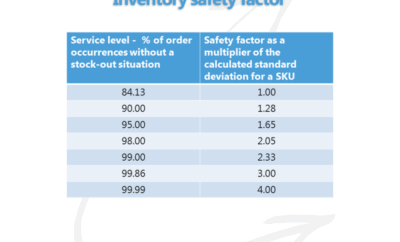
Logistics
How to Build a Profitable Retail Channel Mix for Success
How Retail Has Evolved: Navigating the Profitable Channel Mix
Retail has undergone significant changes over the past 140 years, continuously adapting to the needs of consumers and the evolving landscape. Archie Norman, former leader of ASDA supermarkets in the UK, recently commented on the booming online grocery sector. He noted that while the UK is a world leader in online food shopping with home delivery, this channel remains unprofitable. The reality is that while consumers enjoy the convenience of online shopping and free delivery, the most costly aspects—picking, packing, and delivering—are typically shouldered by retailers.
The Rising Costs of Convenience and Omni-Channel Retailing
Convenience has become a key component of the omni-channel retail strategy, with retailers striving to offer customers the ability to shop anywhere, anytime. To compete with convenience stores like 7-Eleven, major food retailers are opening 24-hour stores. However, small shops located in high-traffic areas often lead to higher unit costs, prompting convenience stores to charge premium prices.
Omni-channel retailing “experts” suggest that prices should be consistent across all channels to avoid confusing customers. In this model, larger retail outlets might need to subsidize smaller or less profitable channels—an outcome that isn’t ideal for business sustainability.
The Changing Face of Retail Over the Last 140 Years
Retail has continuously evolved to meet the changing needs of consumers. In the 19th century, the rise of cities and railway networks paved the way for department stores. The invention of the overland telegraph and railways enabled mail order, while the increasing availability of cars led to the creation of suburban shopping malls. The next shift saw the rise of discount retailers like Walmart and Kmart, followed by “big box” category killers such as Bunnings in Australia. Retailers who successfully innovated and adapted during these transitions continued to thrive, delivering strong returns for owners and shareholders.
Strategizing Your Retail Channel Mix
In today’s retail landscape, logisticians should play an integral role in decision-making, especially when it comes to omni-channel retailing. Just because other retailers are adopting online or convenience models doesn’t mean you should follow suit. While these channels have their advantages, it’s crucial to evaluate whether they align with your core business strategy—whether you’re in food, apparel, or home furnishings.
Amazon, for instance, is often seen as a major threat to traditional retailers like Walmart. However, Amazon was never an omni-channel retailer; it has operated on an online-only strategy from the very beginning.
Rather than spreading your resources thin across less profitable channels, it may be wiser to focus on what you do best. Consider whether it’s more profitable to build strong returns in your existing channels, rather than venturing into new ones that may not offer the same level of profitability.
Conclusion: The Importance of a Tailored Retail Strategy
Retail continues to evolve, and understanding the right channel mix is crucial for success. Retailers must assess each channel’s profitability and relevance to their target audience. Focused innovation and strategic decisions can help create lasting value, just as they have for many successful retailers throughout history.




0 comments